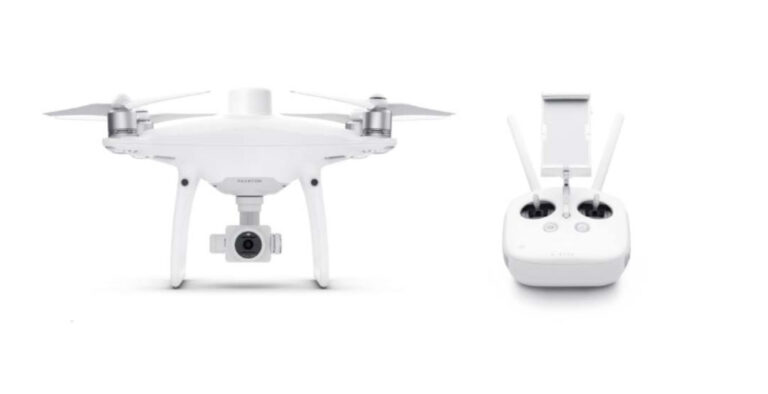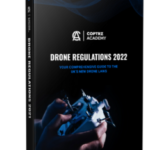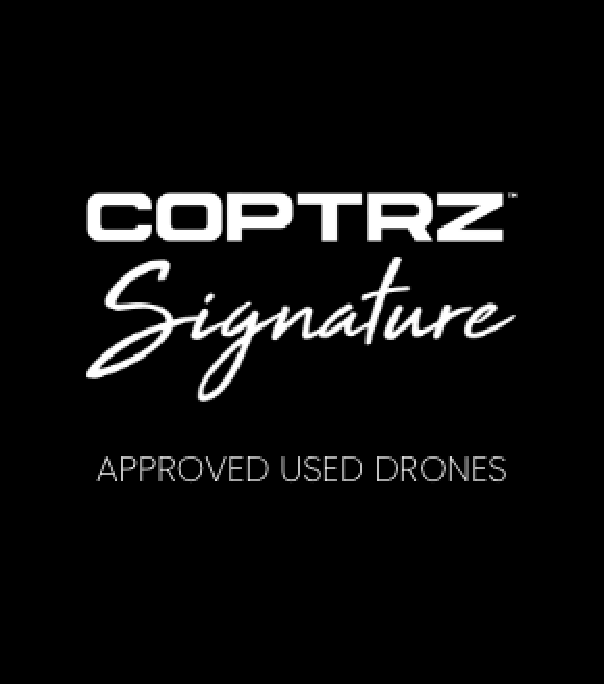Whether you are looking at deploying drones in your business or are thinking about starting your own drone services company in 2022. There is no better time to get involved in the commercial drone market. A recent report by PWC shows that drones will provide a £42 billion uplift to the UK economy by 2030.
Most of that uplift will come from cost savings provided by drones which are set to transform the way businesses operate. Take surveying, for example, most professional surveyors now use drones to help them carry out their jobs. In just a short space of time, the drone has become a fundamental part of their tool kit, as important as the theodolite.
And many more industries are set to follow suit. The emergency services, construction, security, education, inspection and media. All these industries and more will be transformed by drones over the next five to ten years.
But as the drone market continues to grow, so does the number of drones built to serve it. There are fixed-wing drones, VTOL drones, multirotor and hybrid drones. This can cause confusion for people new to the market. So where do you start?
In this blog, we are going to look at the best drones for beginners looking to start their own drone services business in 2022. We are assuming here that the reader has little to no experience with drones, but even if you have flown a drone before this guide will also help you choose the right device.
Drone categories
First things, first, let’s look at the different drone categories available. Just like conventional aircraft, drones come in all different shapes and sizes. But generally speaking they each fall into one of the following three categories:
Fixed-wing
Fixed-wing drones look much like conventional aircraft. They have a central fuselage with two wings to provide lift and a vertical stabilizer at the rear for stability. Power options vary, they can be powered by a single front or rear-facing rotor or built into the fuselage or multiple forward or rear-facing rotors attached to the wings.
Fixed-wing aircraft are not as popular as the other types of drones mentioned here. The reason is that, like conventional aircraft, they require a large area for take-off and landing. They are also much less manoeuvrable than multi-rotor drones. But that doesn’t mean they should be discounted altogether because they have one advantage.

Fixed-wing drones have a much greater range and speed than multi-rotor drones. If speed and range are important factors, then fixed-wing is the way to go. Of course, you could get the best of both worlds with a hybrid drone, but more about those in a moment.
Multirotor
Multirotor drones make up the vast majority of both consumer and commercial drones on the market. They consist of a central frame with rotors attached via arms. The frame material varies from drone to drone but most commercial drones use either a carbon fibre or magnesium frame for strength and lightness.
Multirotors are available with various rotor configurations, the four-rotor aircraft (quadcopter) is the most popular because it provides the best balance between lift, manoeuvrability and range. But six (hexacopter) and eight (octocopter) rotor models are also available. The more rotors, the greater the payload that can be carried, but this comes at the expense of range.
You may be interested in Fixed-Wing vs Multirotor Drones for Surveying

Hybrid
Finally, we have hybrid drones, which attempt to make the best of both worlds. A hybrid drone has vertical take-off and landing (VTOL) ability like a multi-rotor, but once in the air, they fly like a fixed-wing aircraft. In theory, this provides all the range and speed of a fixed-wing aircraft but without any of the drawbacks.
But in reality, compromises have to be made. Hybrids don’t have the range or speed advantage of a truly fixed-wing aircraft and they don’t have the manoeuvrability of a multi-rotor one. While they are useful for some applications such as surveying large areas of land. Their use is somewhat restricted and is therefore not the best choice for beginners.
To sum up, there are three main categories of drone, fixed-wing, multirotor and hybrid. They all have their advantages and disadvantages, but multirotor drones provide the best mix of payload and manoeuvrability, while also being the easiest to fly. From a business perspective, there is also more work for multirotor drones than any other type of UAV.
Beginners should, therefore, limit their search to multirotor drones. Specifically quadcopters, which provide the best compromise between payload, speed and manoeuvrability. You can always purchase one of the other types once you have decided which area of the drone services business to specialise in.
Popular drones for beginners in 2022
Now we have established the drone configuration you should choose, let’s have a look at some of the most popular commercial grade quadcopters on the market. The following drones cover the major price points from under £1,000 to over £3,000.
So let’s dive in!
Mavic Air 2
First up is the Mavic Air 2, this is one of the smallest drones listed here, but what it lacks in size, it more than makes up for with features. The Air 2 combines the best features from the original Mavic Air plus improved performance capabilities. In our opinion is it more of a high-end consumer device, but that being said, it is a good quality drone. It is easy to fly and has excellent image taking capabilities making it an ideal option for those who want to operate commercially in media-based sectors.
Pros
Excellent image quality for the price – The Mavic Air 2 has a larger 1/2″ CMOS sensor, which is capable of shooting 4K UHD video along with 48-megapixel stills. One advantage the Air 2 has over the original Air is the addition of FocusTrack, this gives the pilot more control over tracking in high-speed scenes, even if the subject has been lost behind an object. If you want to learn how to capture stunning aerial images with your drone, check out this article.
Separate ground controller – Like most commercial-grade drones the Mavic Air 2 comes with a dedicated ground controller, so you are not limited to using gesture controls on your smartphone. This gives the pilot more precise control of the device. The controller is light, has a simplistic design with a smartphone mount at the top and has a battery life of 240 minutes.
Cost-effective – The DJI Mavic Air 2 is a relatively cheap drone that provides incredible image quality for the price. There really is no other drone on the market that provides professional-quality image capture for this kind of money.
Cons
Limited ground controls – The ground controller is not quite as feature-rich as the higher grade drones in this list. There is no built-in telemetry display for example. But it is at least better than having to rely on your smartphone for control.
Limited collision avoidance – The Air 2 comes with an obstacle avoidance system that uses data collected by the drone’s cameras to build a 3D map of the surrounding terrain. In theory, this is great, but in practice, the cameras are not omnidirectional so the drone does not have 360° vision of its surroundings. This means pilots need to be careful when flying the Air 2, as it is not able to detect obstacles to the side or above the direction of travel.
Payload limited – The compact size of the Air 2 means the maximum payload is limited to 350g. While the Air 2 is a fine drone for learning to fly, commercial users may find applications are limited to making promotional videos.
Parrot ANAFI
The Parrot ANAFI is another compact, lightweight aircraft making it an ideal alternative to the DJI Mavic Air 2. Its size, weight, USB-C charging capability and protective case make it arguably the most portable commercial-grade drone on the market. So if your drone business requires a lot of travel, the Parrot ANAFI could be a great option for you when starting a drone business.
Pros
Cost-effective – The Parrot ANAFI is the most cost-effective drone on the list. You can easily purchase it with a range of accessories (including extra batteries, propellers and a carry case) at a relatively low price for example our Drone Mapping Training Package. This makes the Parrot ANAFI a great starting drone to practise your flying skills and build your confidence before purchasing something more costly like a DJI Matrice 300.
Incredibly travel friendly – The Parrot ANAFI puts all emphasis on size. When folded, it measures just 244mm in length, and even when stored in the protective case it fits easily into your camera bag without adding much weight at all – just 320g!
Cons
No additional payloads– Unsurprisingly being the smallest drone in the list, the Parrot ANAFI was not designed to carry additional payloads. This can be limiting if you require additional attachments like a second camera view or spotlight for your aerial work.
No obstacle avoidance – The absence of any obstacle avoidance capabilities means you’ll want to be extra careful when operating the Parrot ANAFI. This drone isn’t able to warn you about any objects close by so keep a sharp eye out!
Requires a smartphone – If you don’t have a smartphone, this isn’t the drone for you because you must have a smartphone to operate the Parrot ANAFI, or at least access to one. The Skycontroller 3 (the ground control remote included with the Parrot ANAFI) can hold a phone up to the size of an iPhone 8 Plus.

Phantom 4 RTK
With the Phantom 4 RTK, we are moving towards a drone aimed firmly at commercial users, specifically surveyors. The compact Mavic Air 2 and Parrot ANAFI are very capable camera drones, which makes them popular workhorses in multiple industries. But with the Phantom 4 series, we are introduced to a dedicated commercial platform with real payload lifting capacity for the first time. It was built specifically with surveyors in mind, so if aerial surveying is a sector you want to operate drones in, the Phantom 4 RTK is an option worth considering.
Pros
Ease of flying – The Phantom 4 RTK really is an easy drone to get the hang of, even for pilots who have never touched a drone before. The one-touch take-off and land functionality are combined with deft joystick controls which make piloting the Phantom 4 a fun and enjoyable experience.
Lift and drop ability – The Phantom 4 RTK is the first drone here that can carry a serious payload, up to 826g. This makes it much more viable as a commercial drone because a number of accessories can be fitted, such as a thermal or multispectral camera opening your business up to even more opportunities and income.
Centimetre level positioning – The Phantom 4 RTK is also the first drone in our list to include an integrated RTK module. This means you can trust the survey data you collect will be accurate, an important aspect when performing aerial surveys. You can learn more about RTK and why it’s important here.
Cons
Single battery – The Phantom 4 RTK only has a single battery. While this provides up to 28 minutes flying time without a payload, once a payload has been introduced the range and battery life can fall dramatically. Something to think about if you intend to carry a large payload.
Higher price point – Because data collected for surveying purposes must be of high quality, the tools used to collect said data are going to come in at a higher price point. The Phantom 4 RTK might be the most expensive aircraft in this list but when compared to other surveying drones, it is actually a cost-effective option. You can read more about the top drones for surveying here.

Mavic 2 Enterprise Dual
The DJI Mavic 2 Enterprise Dual is ideal for a business start-up drone, this versatile quad-copter packs a lot of features that can be utilised across various sectors thanks to an additional set of accessories that are carried over from the DJI Mavic 2 Enterprise. It is also a great entry-level drone to introduce you to the wonderful world of aerial thermal imaging.
Pros
Compact size – The Mavic 2 Enterprise Dual features the standard DJI Mavic style fold-out arms which provide a quicker setup time and deployment, within minutes if the situation requires. It weighs in at just 899g making it easy to store and easy to transport.
Dual Camera – The DJI Mavic 2 Enterprise Dual was developed in collaboration with FLIR systems. It includes a dual camera that houses two lenses – standard visual (zoom) and FLIR (Forward Looking Infra-Red). Having thermal capabilities in your arsenal opens your business up to so many more job opportunities – think security, search and rescue, restricted area control, critical asset inspection, aerial photography and more.
Payload options – Attaching the DJI Mavic series payloads like a speaker, floodlight, and beacon is easy. It adds another level of versatility to the Mavic 2 Enterprise Dual making it ideal for a range of sectors.
Cons
Low thermal resolution – While the Mavic 2 Enterprise Dual does have thermal imaging capabilities, the resolution of the thermal camera is low compared to others on the market (160×120). However, higher resolution thermal cameras do come with a higher price tag like the Mavic 2 Enterprise Advanced for example.

Why you shouldn’t base your decision on price
When starting any business it’s a good idea to keep a close eye on costs and expenditure. But that doesn’t mean you should purchase the cheapest drone you can find. When it comes to drones, you really do get what you pay for.
The Phantom 4 RTK for example, may look expensive when compared to a Mavic Air 2. But while these are both highly capable quadcopter drones, the Phantom 4 RTK is built with a purpose the Mavic Air 2 could never be used for. You will not think this is expensive when a potential customer requests a high-quality land survey and you’re able to provide the data required in a matter of minutes. Resulting in a happy customer, positive referrals and ultimately more income for your business.
Conclusion
As you can see, there is a lot to think about when choosing your first commercial-grade drone. To make the decision easier, you should answer the following question honestly.
How much experience do I have flying drones?
If the answer is little to none, you should choose one of the smaller drones like the Mavic Air 2 or the Parrot ANAFI. They’re easy to fly and great drones for learning the basics. You can always upgrade your equipment later once you have gained more experience.
If you do have previous experience flying drones and you know which sector you want to specialise in, it makes more sense to go for something more advanced like the Phantom 4 RTK or the Mavic 2 Enterprise Dual.
But, starting a drone business in 2022 doesn’t just end with purchasing a drone. You also need to consider the rules and regulations of flying your new drone. If you’re a little unsure about the UK drone regulations you can download our handy Drones Regulations 2022 Guide below.

DOWNLOAD OUR FREE GUIDE


